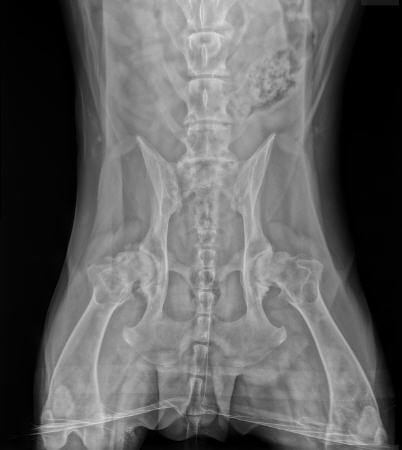-
During growth, both the ball (the head of the femur, or
TARGET-large breed
Many dogs with similar radiographs will not be in pain and thus will not end up coming in for an evaluation. These dogs show up later as elderly dogs, after they have been walking on their poorly formed hips for many years. After many years, bony spurs along the margins of the socket, mineralization of the joint capsule, cartilage wear, and inflammatory change in the joint
Normal

Abnormal


Clinical sign-

In the young dog with hip dysplasia, the earliest abnormality visible on

-
https://www.dvm360.com/view/diagnosing-hip-dysplasia-proceedings
https://www.cliniciansbrief.com/article/canine-hip-dysplasia-part-1
https://veterinarypartner.vin.com/default.aspx?pid=19239&id=4952203









No comments: